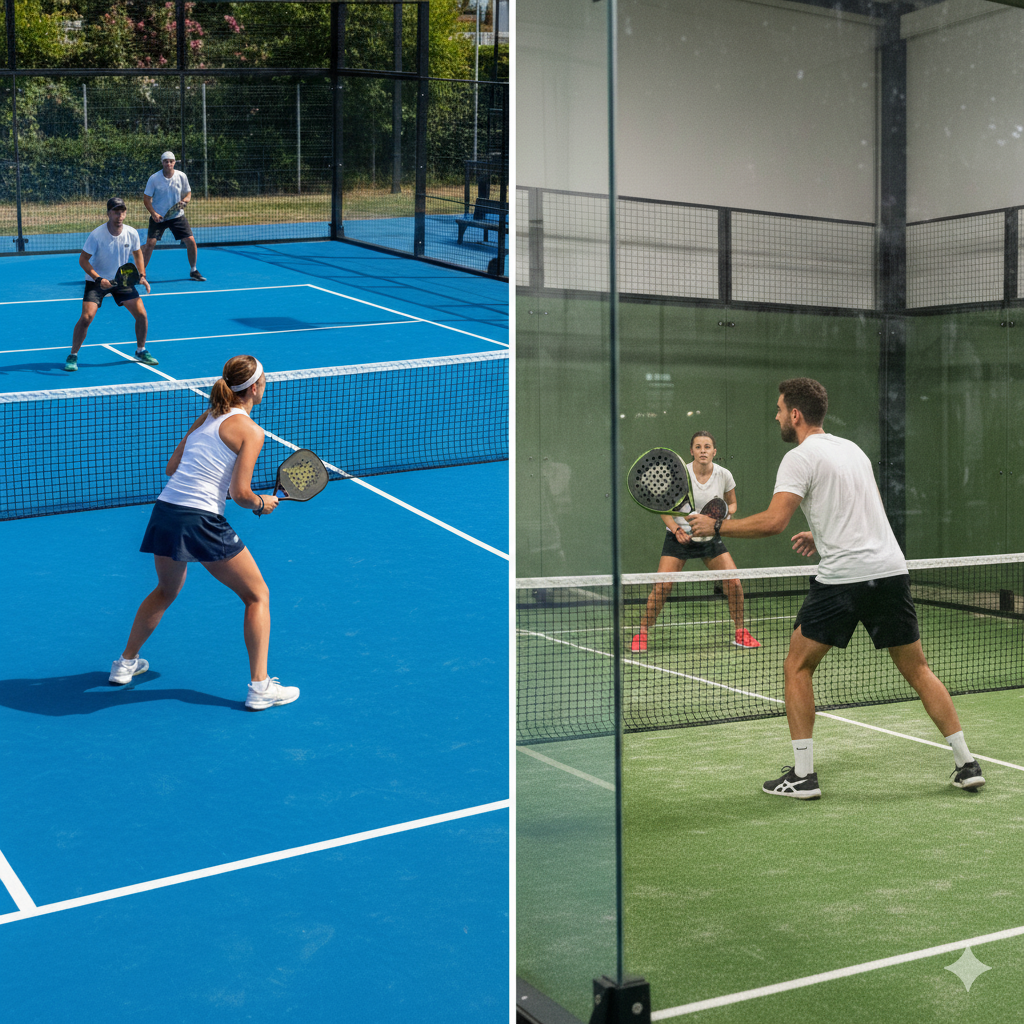Transitioning from Pickleball to Padel: A Player’s Guide
With the booming popularity of both pickleball and padel worldwide, many players are curious about taking the leap from one racquet sport to another. Padel is a fast-paced, dynamic game blending elements of tennis and squash. If you’re a seasoned pickleball player wondering how to handle the bigger court and the bounding walls, here’s a practical guide to help you make a smooth, successful, and fun transition.
The Familiar Foundation: Why Pickleball Prepares You for Padel
The good news is that your time on the pickleball court has already given you a solid head start. Pickleball and padel share crucial DNA that makes the transition immediately approachable:
Quick Volleys and Reflexes: Both are paddle sports played near a net, demanding quick hands and sharp reflexes. Your ability to dominate the "Kitchen" translates directly to quick volleys at the padel net.
Strategic Placement: Both games prioritise strategic shot placement over raw power. The intuition you developed for hitting angles and targeting opponents' feet in pickleball is a fantastic asset in padel.
Doubles Mentality: The doubles format is standard in both sports. You already understand the need for teamwork, communication, and coordinated movement with a partner.
Soft Hands: The touch and finesse required for dinking and resetting the ball in pickleball are invaluable for executing delicate shots in padel, such as the chiquita (a slow, controlled drop shot).
Key Differences: What You Need to Adapt To
Despite the similarities, padel introduces revolutionary elements that require deliberate adjustment. Success hinges on mastering these core differences:
The Walls: Anticipation and Defense. Padel courts are enclosed by glass and wire mesh. Learning to let the ball rebound off the walls (often the smartest defensive play) is the single biggest shift.
The Serve: Adding Spin and Consistency. Padel serves are underhand, similar to pickleball, but must bounce in the service box first. You must learn to add slice or sidespin to keep the ball low after it hits the opponent's glass.
The Equipment: Weight and Feel. Padel racquets (or palas) are heavier and solid with holes (no strings). The weight and different surface material require a stronger, more controlled swing and different grip pressure.
Shot Variety: The Overhead Arsenal. Padel demands a broader shot repertoire, including the unique overhead shots like the defensive Bandeja and the offensive Vibora, which are essential for controlling the net.
Court Size & Movement: Lateral and Backward Coverage. Padel courts are significantly larger. You need to transition quickly and cover much more ground with dynamic lateral and backward sprints, especially when retrieving lobs.
Practical Tips for a Smooth Transition
You don't need to forget everything you learned in pickleball, but you do need to layer on new skills. Focus on these actionable steps:
1. Start with Shadow Wall Practice
The walls are the heart of padel. Before worrying about an opponent, simply practice hitting the ball softly against the back glass and positioning yourself to return it after the second bounce. This drill helps you internalise the timing and angle of the wall rebound, skills unique to padel.
2. Master the Padel Slice Serve
The underhand motion is familiar, but the goal is different. Focus your serve practice on brushing the ball to generate a slice or sidespin that makes the ball hug the side wall after the bounce. A high-bouncing serve (common with beginner topspin) is an open invitation for a winning smash.
3. Prioritise Control Over Power
Just as dinking controls the point in pickleball, consistency and placement control the point in padel. Use 60-70% power on your groundstrokes and volleys. Your main objective is to keep the ball deep, forcing the opponent to retreat or play off the glass, thereby buying time for you and your partner to consolidate the net position.
4. Take Padel-Specific Lessons
A few beginner padel lessons can accelerate your learning curve exponentially. A coach can quickly correct common mistakes made by racquet sports converts, such as overswinging the service motion or failing to prepare for wall rebounds.
5. Adapt Your Footwork & Net Transition
Padel requires covering a larger area dynamically. Work on drills that involve:
Split-stepping before your opponent makes contact.
Lateral shuffling at the net.
Quick backward sprints to retrieve lobs, immediately transitioning from defense to the net attack.
The Pickleball Player's Advantage
Ultimately, pickleball players often thrive in padel because the fundamental emphasis on soft hands, net play, and tactical awareness is already baked into their game. Your experience in quickly processing doubles strategy and utilising precise shot placement gives you a distinct edge as you learn the nuances of the walls and the overhead shots.
With a little deliberate practice and patience, the transition from the kitchen line to the glass wall can be a fun, enriching challenge—opening the door to a new sport with a vibrant community and exciting, dynamic gameplay.

